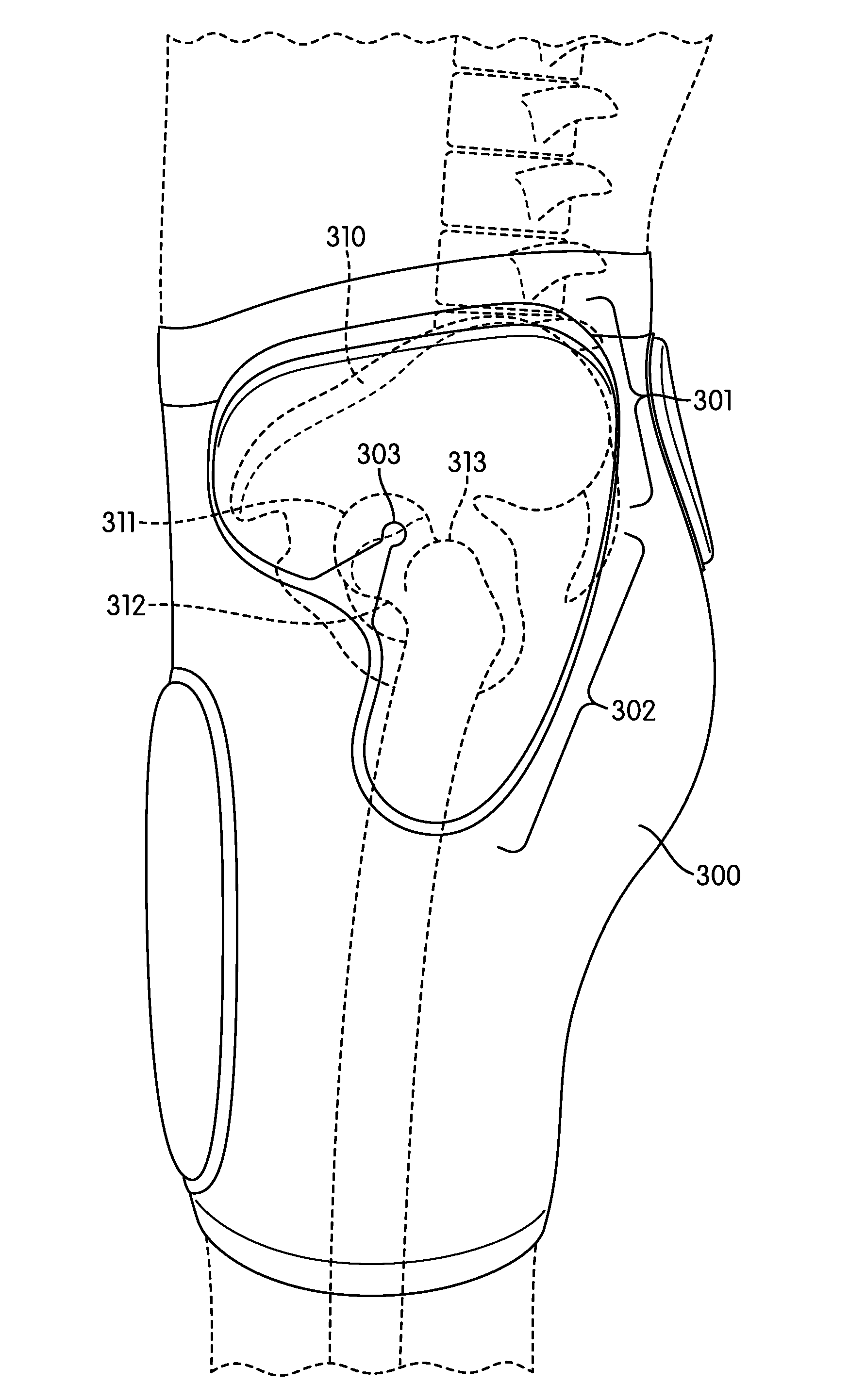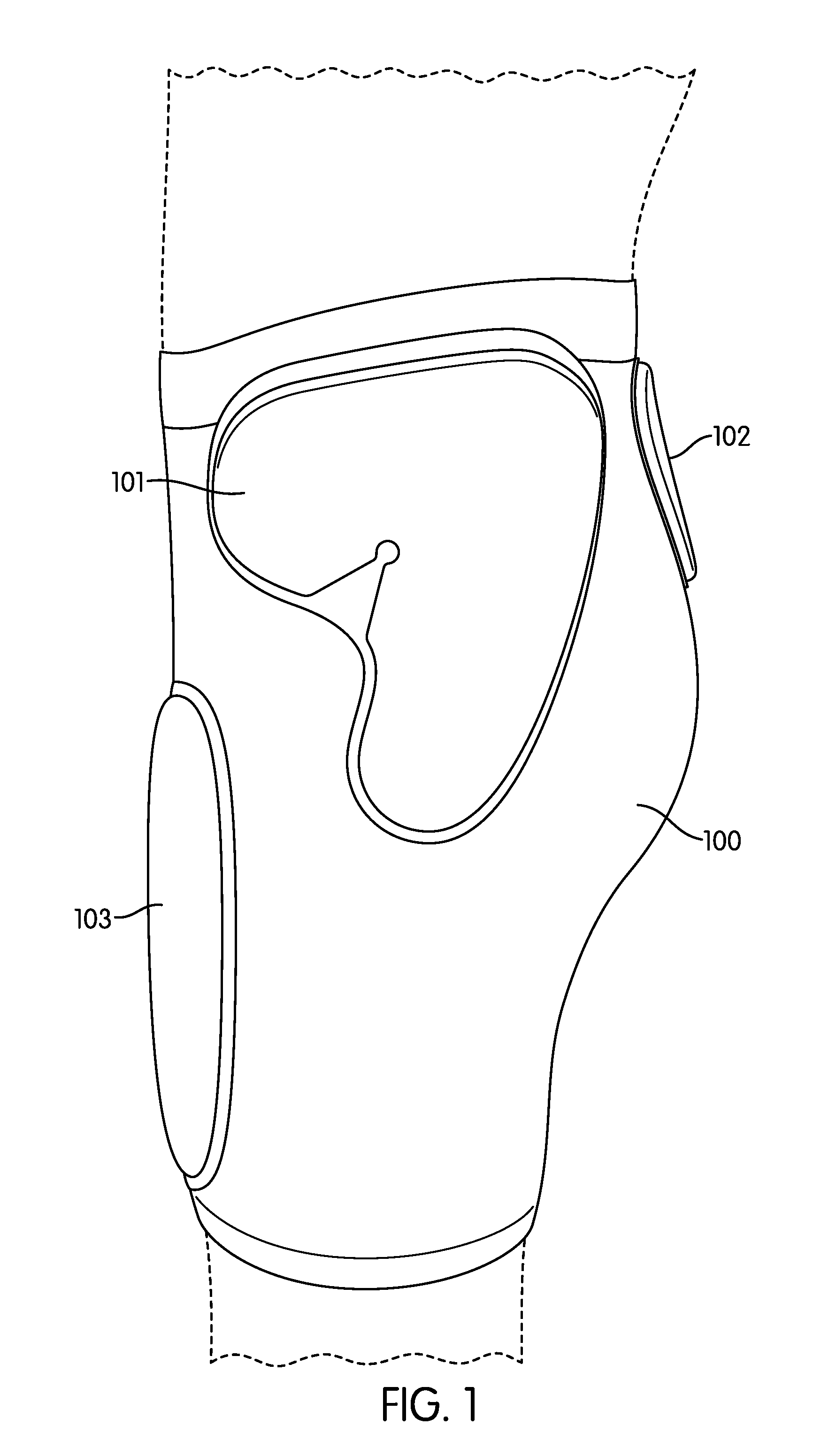Athletic garment with articulated body protective underlayer
a protective underlayer and athletic technology, applied in the field of athletic apparel, can solve the problems of restricting and reducing the mobility of the athlete while running, so as to improve the protection and stiffness
- Summary
- Abstract
- Description
- Claims
- Application Information
AI Technical Summary
Benefits of technology
Problems solved by technology
Method used
Image
Examples
Embodiment Construction
[0032]An athletic garment containing protective underlayer elements is the lower body garment 100 shown in FIGS. 1 and 2. The lower body garment is made of a breathable material forming the outer fabric layer, and contains a protective hip underlayer element or pad 101, a protective coccyx underlayer element or pad 102, and a protective thigh underlayer or pad 103. FIG. 1 illustrates a side view of the lower body garment 100 showing the position of the protective hip underlayer 101 and protective thigh underlayer 103 with respect to the wearer. FIG. 2 is a rear view of the lower body garment 100 best illustrating the position of the protective coccyx underlayer 102 with respect to the wearer. Each underlayer element comprises a foam core preferably sandwiched between fabric coverings. The underlayer elements shown in FIGS. 1 and 2, for example, have an underlayer fabric covering over the foam core.
[0033]It is possible that the foam core is attached to only one fabric covering which ...
PUM
 Login to View More
Login to View More Abstract
Description
Claims
Application Information
 Login to View More
Login to View More - R&D
- Intellectual Property
- Life Sciences
- Materials
- Tech Scout
- Unparalleled Data Quality
- Higher Quality Content
- 60% Fewer Hallucinations
Browse by: Latest US Patents, China's latest patents, Technical Efficacy Thesaurus, Application Domain, Technology Topic, Popular Technical Reports.
© 2025 PatSnap. All rights reserved.Legal|Privacy policy|Modern Slavery Act Transparency Statement|Sitemap|About US| Contact US: help@patsnap.com



